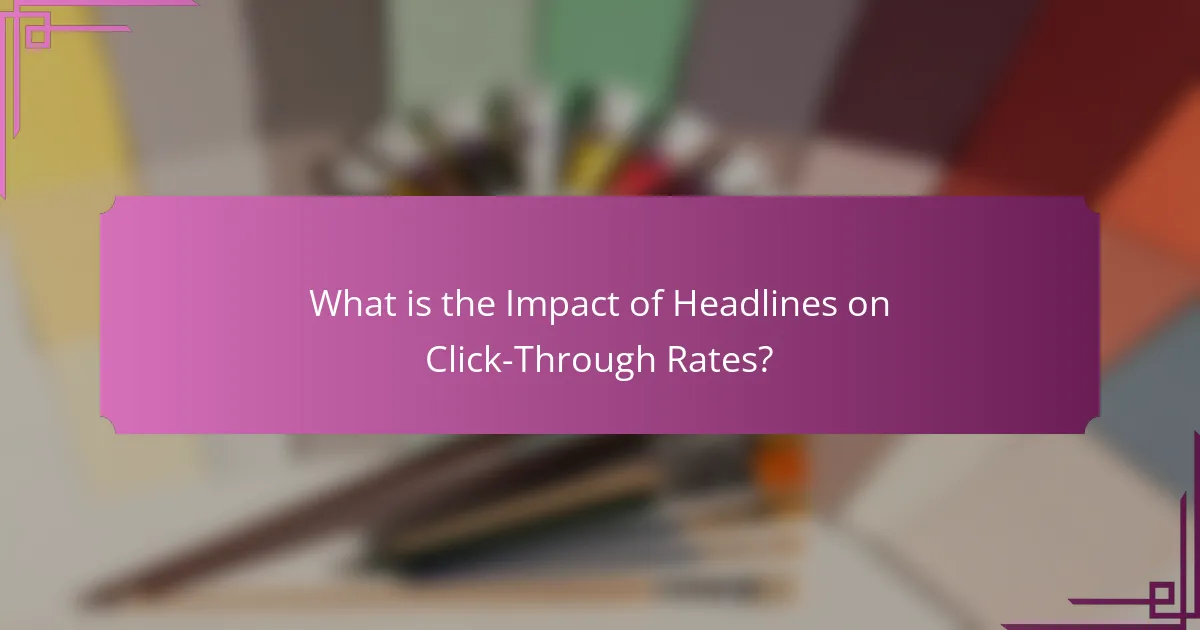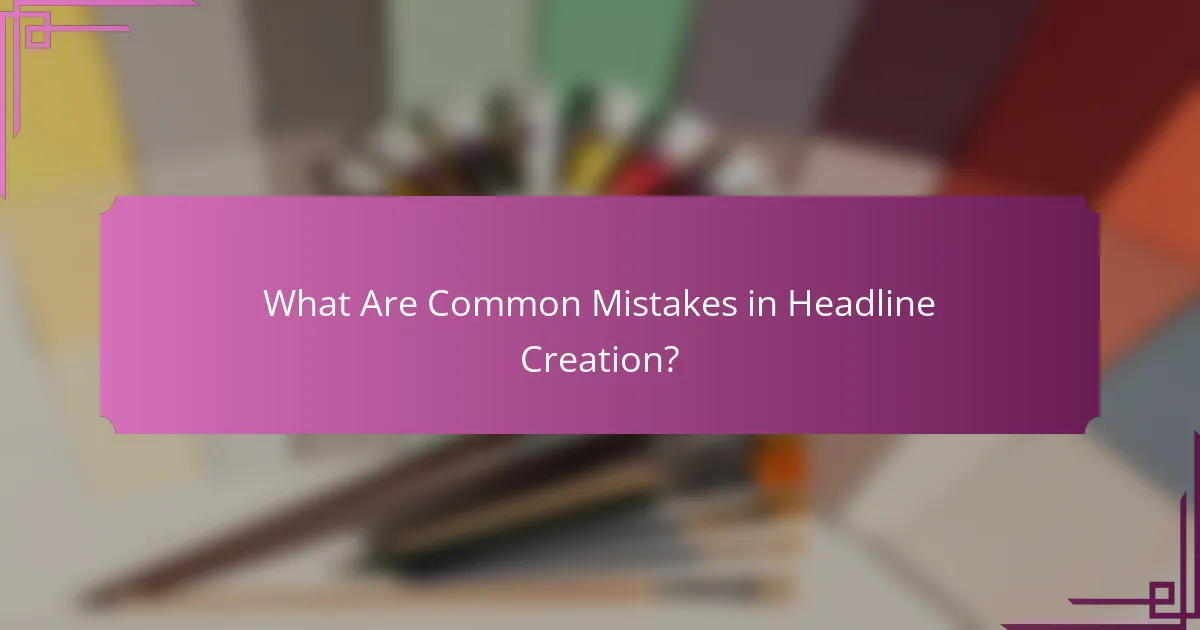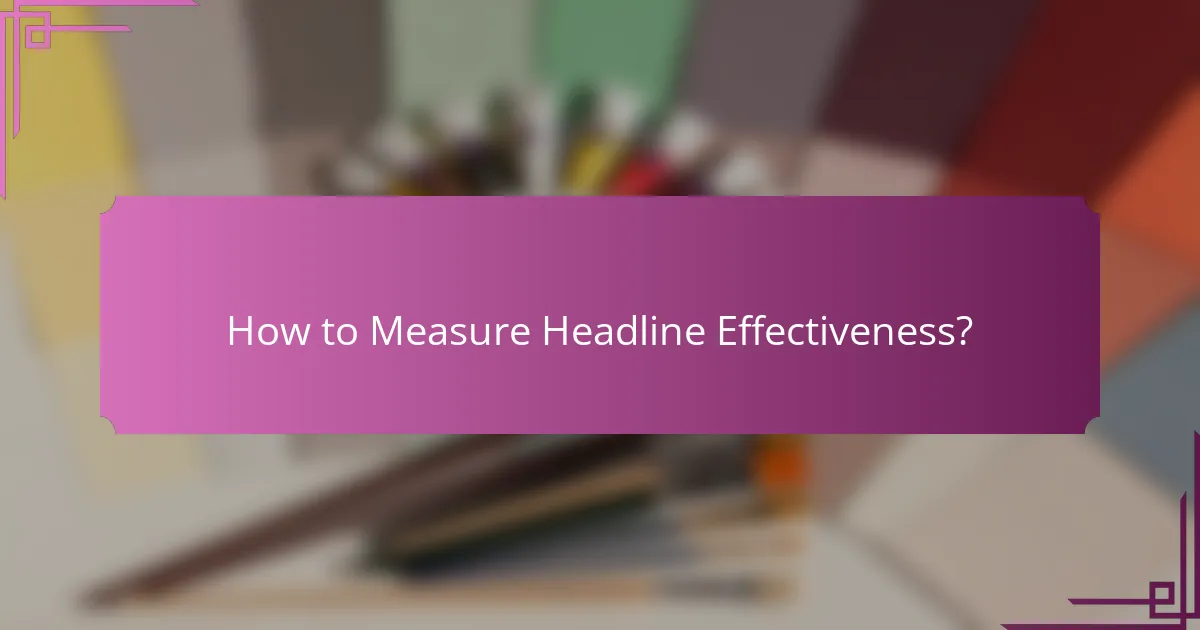Effective headlines are vital for capturing attention and driving engagement in display advertising. By employing techniques such as A/B testing and SEO best practices, marketers can enhance click-through rates and ensure their messages resonate with the target audience. A well-crafted headline not only piques interest but also significantly influences user interaction with content.

How to Write Effective Headlines for Display Advertising?
Effective headlines for display advertising grab attention and encourage clicks. They should be crafted with clarity, urgency, and relevance to resonate with the target audience.
Use action-oriented language
Action-oriented language compels readers to engage immediately. Use strong verbs that encourage action, such as “Discover,” “Boost,” or “Unlock.” For example, instead of saying “New Features Available,” try “Unlock New Features Today!”
This approach creates a sense of urgency and motivates potential customers to take the next step, whether it’s clicking a link or making a purchase.
Incorporate numbers and statistics
Numbers and statistics provide concrete evidence that can enhance credibility. Headlines like “Increase Your Sales by 30%” or “Join 1,000 Satisfied Customers” can significantly boost interest. Specific figures attract attention and suggest measurable benefits.
When using statistics, ensure they are relevant and easily digestible. Avoid overwhelming readers with complex data; instead, focus on straightforward, impactful numbers.
Utilize emotional triggers
Emotional triggers can create a strong connection with the audience. Words that evoke feelings of happiness, fear, or urgency can make headlines more compelling. For instance, “Don’t Miss Out on Your Dream Vacation!” taps into the fear of missing opportunities.
Consider your target audience’s emotions and tailor your headlines to resonate with their desires or pain points, making your message more relatable and persuasive.
Keep it concise and clear
Conciseness is crucial in display advertising, where space is limited. Aim for headlines that are direct and to the point, ideally under 10 words. A clear message ensures that the audience quickly understands the value proposition.
Avoid jargon or complex language that may confuse readers. Simple, straightforward headlines like “Save 20% on Your Next Purchase” convey the message effectively without unnecessary fluff.
Test different variations
Testing different headline variations is essential for optimizing performance. A/B testing allows you to compare how different headlines perform in terms of click-through rates and conversions. Small changes, like wording or punctuation, can lead to significant differences in results.
Regularly analyze the performance of your headlines and adjust based on data. This iterative process helps identify what resonates best with your audience, ultimately improving your advertising effectiveness.

What Techniques Improve Headline Performance?
Improving headline performance involves using strategies that enhance engagement and click-through rates. Key techniques include A/B testing, competitor analysis, and applying SEO best practices.
Employ A/B testing strategies
A/B testing allows you to compare two or more headline variations to determine which performs better. By analyzing metrics such as click-through rates and engagement, you can identify the most effective wording and structure.
When conducting A/B tests, ensure that you test one variable at a time, such as wording or length. This helps isolate the impact of each change. Aim for a sample size that provides statistically significant results, typically in the low hundreds or thousands, depending on your audience size.
Analyze competitor headlines
Studying competitor headlines can provide insights into what resonates with your target audience. Look for patterns in successful headlines, such as emotional triggers, question formats, or specific keywords that attract clicks.
Use tools like BuzzSumo or SEMrush to gather data on popular articles in your niche. Take note of their headline structures and common themes, then adapt these insights to create your unique headlines that stand out while still appealing to your audience.
Utilize SEO best practices
Incorporating SEO best practices into your headlines can significantly improve visibility in search engine results. Focus on including relevant keywords that your audience is likely to search for, ideally placing them towards the beginning of the headline.
Keep headlines concise, ideally under 60 characters, to ensure they display fully in search results. Additionally, consider using numbers or lists in your headlines, as these often attract more clicks. Avoid clickbait tactics that may lead to high bounce rates and negatively impact your site’s SEO over time.

What is the Impact of Headlines on Click-Through Rates?
Headlines play a crucial role in determining click-through rates (CTR) by capturing attention and encouraging users to engage with content. A compelling headline can significantly increase the likelihood of a user clicking on a link, making it essential for effective online communication.
Headlines significantly influence engagement
Engagement levels are directly tied to the effectiveness of headlines. A well-crafted headline can spark curiosity, prompting users to read further. For instance, headlines that pose questions or offer solutions tend to attract more clicks compared to generic statements.
Consider using action verbs and emotional triggers in your headlines to enhance engagement. For example, instead of “Tips for Writing,” try “Unlock Your Writing Potential with These Tips.” This approach can lead to higher interaction rates.
Effective headlines boost conversion rates
Effective headlines not only attract clicks but also drive conversions. When users are drawn in by a strong headline, they are more likely to take desired actions, such as signing up for a newsletter or making a purchase. A headline that clearly communicates value can increase conversion rates by significant margins.
To maximize conversions, ensure your headlines align with the content that follows. Misleading headlines can lead to high bounce rates, undermining your efforts. A/B testing different headlines can help identify which versions resonate best with your audience.
Headlines affect brand perception
The choice of headline can shape how a brand is perceived by its audience. Headlines that convey professionalism and expertise can enhance credibility, while sensational or misleading headlines may damage trust. Consistency in tone and messaging across headlines reinforces brand identity.
For example, a tech company using technical jargon in its headlines may be viewed as an authority in the field, while a lifestyle brand might opt for relatable, conversational language. Understanding your target audience is key to crafting headlines that positively influence brand perception.

What Best Practices Should Be Followed?
Effective headlines should be crafted with the target audience in mind, clearly communicate value, and incorporate relevant keywords. Following these best practices can significantly enhance engagement and click-through rates.
Align headlines with target audience
Understanding your target audience is crucial for creating headlines that resonate. Tailor your language, tone, and topics to match the interests and preferences of your readers. For instance, a headline aimed at professionals might use industry jargon, while one for a general audience should be more accessible.
Consider conducting audience research to identify their needs and pain points. This insight will help you create headlines that directly address their concerns, increasing the likelihood of engagement.
Use clear value propositions
A strong value proposition in your headline can effectively capture attention. Clearly state what readers will gain by clicking through, whether it’s solving a problem, learning something new, or accessing exclusive content. For example, instead of “Tips for Healthy Eating,” try “10 Easy Ways to Eat Healthier Every Day.”
Ensure that your value proposition is specific and actionable. Headlines that promise clear benefits tend to perform better, as they set clear expectations for the reader.
Incorporate keywords naturally
Incorporating relevant keywords into your headlines is essential for search engine optimization (SEO). Use keywords that your audience is likely to search for, but do so in a way that feels natural and engaging. Avoid keyword stuffing, as it can make your headlines awkward and less appealing.
Consider using tools like Google Keyword Planner to identify popular search terms related to your topic. Aim to include these keywords in a way that enhances the headline’s clarity and appeal, such as “Affordable Home Decor Ideas for Every Budget.”

What Are Common Mistakes in Headline Creation?
Common mistakes in headline creation can significantly impact engagement and clarity. Avoiding these pitfalls is essential for crafting effective headlines that attract and retain readers’ attention.
Overly complex language
Using overly complex language in headlines can alienate potential readers. Headlines should be clear and straightforward, using simple words that convey the message quickly. For instance, instead of saying “Utilizing Advanced Techniques for Enhanced Engagement,” opt for “Boost Engagement with Simple Techniques.”
To avoid complexity, aim for a reading level that matches your target audience. Generally, headlines should be understandable at a middle school level to reach a broader audience.
Neglecting audience preferences
Failing to consider audience preferences can lead to headlines that miss the mark. Understanding your audience’s interests and language is crucial for creating relevant headlines. Conduct surveys or analyze engagement metrics to determine what resonates with your readers.
Tailor your headlines to reflect the language and tone your audience uses. For example, if your audience prefers casual language, a headline like “Top Tips for Your Next Adventure” may perform better than a formal alternative.
Ignoring mobile optimization
Ignoring mobile optimization can result in headlines that are ineffective on smaller screens. With a significant portion of web traffic coming from mobile devices, headlines should be concise and impactful, ideally under 60 characters.
Test your headlines on various devices to ensure they display well and maintain clarity. Use tools that simulate mobile views to see how your headlines appear and adjust them accordingly to enhance readability.

How to Measure Headline Effectiveness?
Measuring headline effectiveness involves analyzing metrics that indicate how well a headline captures audience attention and drives engagement. Key methods include tracking click-through rates, monitoring social shares, and assessing time spent on the page.
Track click-through rates
Click-through rates (CTR) are a primary metric for evaluating headline effectiveness. CTR measures the percentage of users who click on a headline compared to the total number of users who viewed it. A higher CTR typically indicates that the headline resonates well with the audience.
To track CTR, use web analytics tools such as Google Analytics. Set up tracking for specific headlines and monitor their performance over time. Aim for a CTR that aligns with industry benchmarks, which can vary but often fall between 2% to 5% for most online content.
When analyzing CTR, consider factors such as the placement of the headline, the platform used (social media, email, website), and the target audience. Experiment with different headlines to see which variations yield the best results, and avoid overly complex or vague headlines that may confuse readers.


